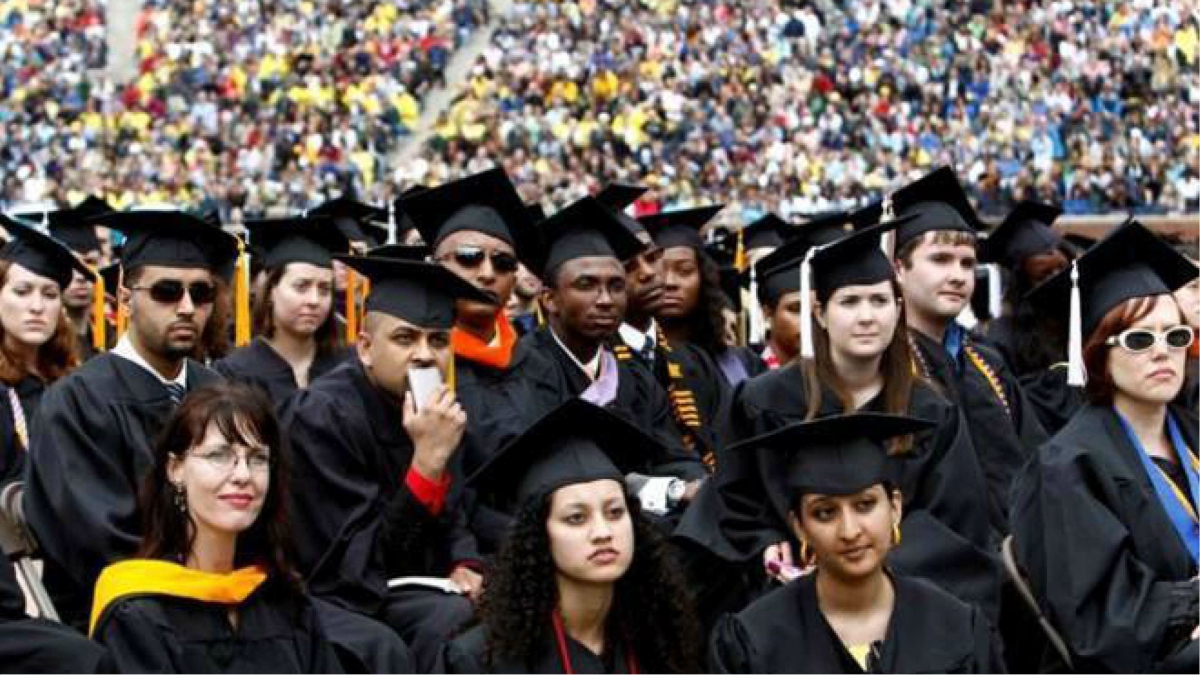Foreign universities have been attractive destinations for Indian students from the pre-Independence era for a variety of reasons. A large number of architects who laid the foundation of modern India had their education from foreign institutions of higher learning. Prominent amongst them, who turned out to be political and academic leaders of incomparable standing, were the Mohandas Karamchand Gandhi, Jawaharlal Nehru, Bhimrao Ambedkar, Zakir Hussain, Homi Jehangir Bhabha, Shanti Swaroop Bhatnagar, M.S. Swaminathan, to name a few. These legendary leaders would have gone to foreign institutions because of the limited opportunities available then back home in India.
Notwithstanding a gigantic system of higher education comprising over 993 degree-awarding institutions and 40,000 colleges, India is the second largest source of international students. It is estimated that each year over three lakh students are going abroad for higher education. Majority of them are going to places like America, England, Australia, etc, where the cost of higher education is quite high. The Government of India took a serious note of it as early as in the 10th Five-Year Plan (2002-07). Consequently, the size of the 11th Five-Year Plan (2007-12) was increased nine-and-a-half times more than the earlier plan with a view to increasing the number of public institutions as also strengthening the existing network of educational institutions. It has led to an unprecedented expansion of public institutions in the sector of higher education. The number of institutions of national importance and central universities were doubled besides creating some newer institutions like Indian Institutes of Science Education & Research (IISERs), National Institute of Pharmaceutical Education and Research (NIPER), Indian Institutes of Information Technology (IIITs), Schools of Planning and Architecture (SPAs), etc. In addition, the private service providers also joined the sector in a large number. However, the institutional density per lakh population still remains below 28 and the Gross Enrolment Ratio (GER) in higher education (26%) also stands below the world’s average of 27%. It signifies that the Indian higher education system continues to remain an underserved sector.
Despite such a massive expansion of the sector, the general exodus of students from India remains unabated primarily because of fierce competition in homeland premier institutions and perceived notion of premium on foreign degrees with possibility of work permit in lands of opportunity. Since it entails transactions of billions of dollars going outside the country, the Government of India thought of opening the doors to the foreign educational institutions (FEIs) based on the recommendations made by the Sub-Committee of the Central Advisory Board of Education (CABE) in the year 2004. The Committee had recommended that tough and detailed regulations were required to ensure the entry of only quality FEIs and not those with commercial considerations. It was also reiterated by the CNR Rao Committee in January 2005.
The matter of entry of FEIs for the first time was formally discussed in the Conference of the State Education Ministers held at Bangalore on 10 January 2005. No state was found to be averse to the idea except Uttar Pradesh. Most states were, however, of the view that FEIs might be allowed only in deficient domains of knowledge. The proposal was once again endorsed by the State Education Ministers in a conference held in July 2008. Both the National Knowledge Commission report (2005-08) and the Yashpal Committee report (2009) also came out in support of the entry of FEIs. They were rather unanimous in incentivising good FEIs to come to India.
Subsequently, the MHRD prepared a legislative proposal and introduced the Bill in Parliament on 19 April 2010. Though the Bill did not find favour with the parliamentarians, the idea of inviting the FEIs persisted even with the successive government in 2014. The issue was taken up at the highest level on 25 June 2014 but remained as much a non-starter as ever before.
The earlier policies were not as explicit as the National Education Policy (NEP), 2020, insofar as the subject of entry of FEIs to India is concerned. They had implicitly expressed research collaboration and exchange programmes. But the NEP 2020 has unequivocally recommended that in addition to research collaboration and exchange programmes with FEIs, a legislative framework would be developed to facilitate the entry of selected FEIs from amongst the top 100 universities in the world.
The subject of the entry of FEIs to India is not as simple as it appears to be. There are some critical concerns that need to be addressed with great care whilst designing the legislative framework. Analysis of some of the significant global ranking reveals that most of the top ranking universities are from a couple of countries like America, England, Australia, China, Japan, South Korea, Hong Kong, etc. It is understood that most of these universities are not quite enthusiastic to set up their campuses outside their homeland. They are the ones which neither crave for international standing, nor have they any commercial consideration. Some of them might consider offering their programmes in collaboration with our premier institutions rather than having their own campuses due to issues of sustainability.
There are a fairly large number of FEIs that are already having programmatic twinning arrangements with local institutions but without any proper mechanism. The legislative framework, among others, should first provide a proper mechanism to deal with such types of arrangements. Care may also have to be taken to identify those areas of study where the country is severely deficient. The issue of differential cost of higher education in the country vis-à-vis the prospective FEIs will also have to be addressed with care.
The primary solution lies in having greater clarity about the benefits that we are going to derive from FEIs in terms of scaling of educators, strengthening the research capacity of our institutions, preparing our students for the modern world and developing visionary leadership to successfully manage other institutions of higher learning in the country. Like this, there are several more pertinent issues which might require greater clarity. They will be dealt with separately due to space constraints.
Sixteen years down the line since the inception of the idea, the issue of legislation remains where it was. India’s interest would be best served not by preventing FEIs but by ensuring proper regulatory measures. The Government of India has now taken up this issue afresh to design an appropriate legislation for giving effect to the entry of FEIs. The bottom line is that the time has come when this issue should be taken up further to its logical implementation but on terms and conditions based on assessment of the current academic and ethical realities.
The writer is former Chairman, UGC. The views expressed are personal.























